Recently we acquired a Tamiya M1025 Hummer. It came RTR (ready-to-run) with an old Acoms 27 MHz radio, a rather new NiMH battery, a charger and this vintage car that was first released in 1995.
The Hummer is a 1/12 scale vehicle, but it runs on a standard 1/10 scale chassis -- Hummers are pretty massive cars, hence the scale difference works out well.
In typical Tamiya fashion the scale details of the car model are very nice. The rear view mirrors are made from a rubberized plastic and stood up well to the test of the time.
The windows are tinted. The 1.55" wheels and tires are the same that are sold to date in CC-01 based kits like the Unimog or Toyota Land Cruiser.
The body is held on with two body clips at the back -- which are missing on our vehicle due to damage to the rear shock tower. The front is secured by hooks on the body that mate up with a bar spanning the front shock tower.
The body accessories like the windows, lights, roof-latch, hooks and air intake are bolted on with screws, which makes it easy to repaint the body. Thanks Tamiya!
The chassis is a mixture of TA01 and TA02. The TA01 chassis was a 1/10 scale touring and rally chassis released first in 1990 for the "Manta Ray". It is four wheel drive with a ball differential (!) in the back and a gear differential in the front. The traditional silver-can is mid-mounted directly into the rear gear box housing. The steering servo lies flat in the front as it is usually seen in buggies. The middle section is occupied by the rather large receiver, throttle servo and mechanical speed controller.
Most of the chassis pieces are from the TA01, but the rear arms are from the TA02. They are angled backwards, giving the chassis the longer wheelbase needed for the Hummer.
The 4WD chassis is shaft driven, with a thin metal shaft linking bevel gears in the front and rear gear box. The shock absorbers are Tamiya CVA mini shocks with 60mm length.
On our car the rear shock tower was repaired, making the body sit a bit too low. We will replace the broken pieces with original spare parts which surprisingly can still be found at on-line retailers.
A blast from the past: 3-step mechanical speed controller (MSC). At full speed the battery is directly wired to the motor. At the slower speeds a resistor (the metal-caged device with the sticker) is placed between the battery and the motor. This reduces torque and therefore speed. Actually while torque is reduced by quite a bit, it has not so much effect on the top speed of the car when run on smooth surfaces. As side effect the resistor gets very hot very quickly.
It is a fun experience driving such a vintage car. The glitchy-ness of an old 27 MHz AM radio system and the crude response of the 3-step MSC make for quite a thrill ride when there are obstacles around.
We are very happy to have the Tamiya M1025 Hummer as part of our ever-growing fleet. Spare parts are already in transit. Most likely we will re-paint the car white, like an UN peace vehicle. The electronics will be upgraded to an ESC and a 2.4 GHz radio system -- but we will certainly keep the old parts for future "museum" use. We will swap the differentials (ball diff to the front, gear diff to the back) and lock the rear differential to allow for mild trailing.
Stay tuned for when our M1025 Hummer is reborn!
All articles in this series:
Our Tamiya M1025 Hummer
Part 1 - Dismantling and cleaning
Part 2 - Body work
Part 3 - Chassis
Part 4 - Detailing

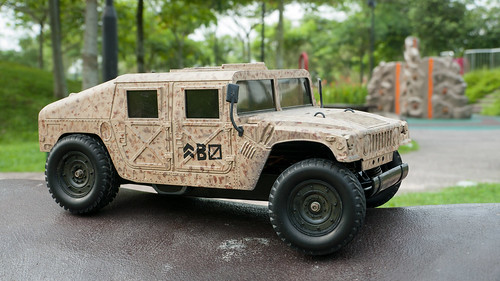
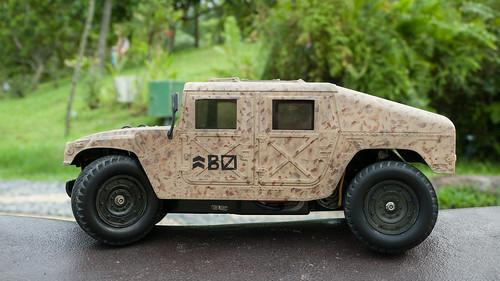
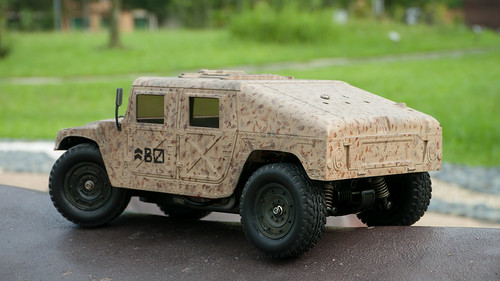
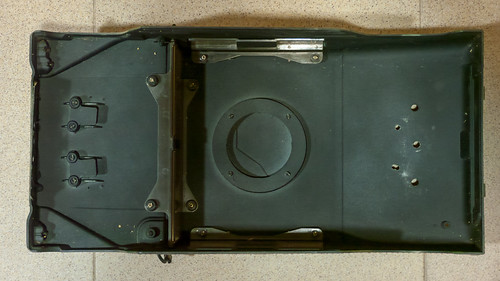
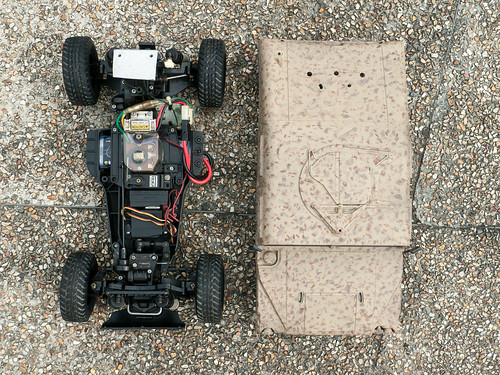
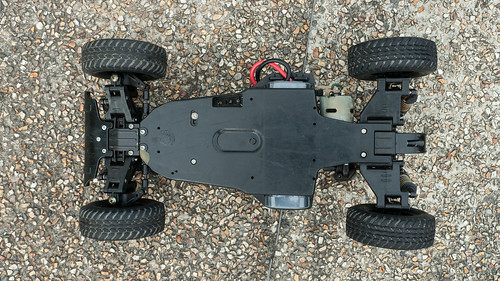
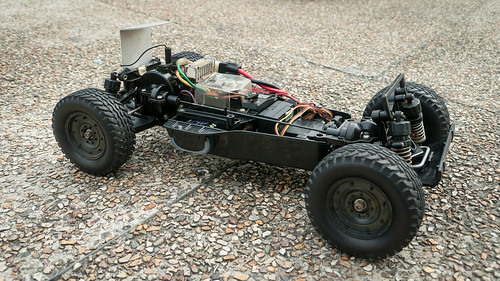
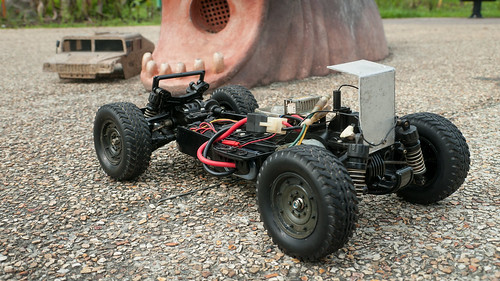
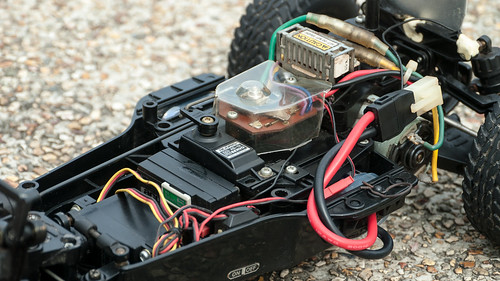
No comments:
Post a Comment